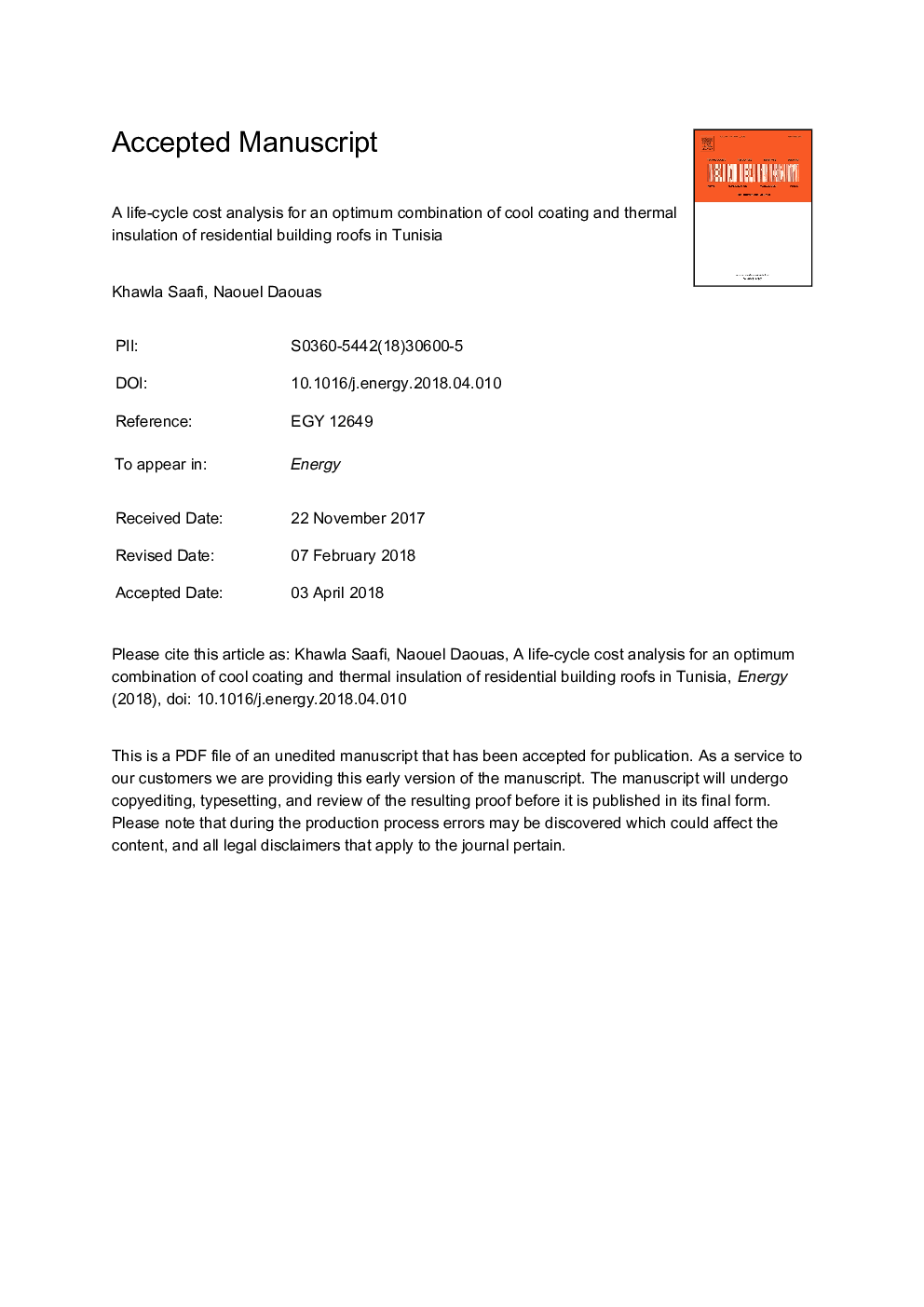| Article ID | Journal | Published Year | Pages | File Type |
|---|---|---|---|---|
| 8071710 | Energy | 2018 | 46 Pages |
Abstract
The interaction between the roof thermal insulation and the cool roof effects is assessed in order to determine an optimum combination of the two measures. Dynamic simulations and estimation of the annual energy requirements are performed using EnergyPlus. Two roof structures, three insulation materials and three reflectivity scenarios are considered while taking into account the ageing of the cool material. An energy-based optimization shows that the summertime benefits induced by the rise of reflectivity outweigh the winter penalties, and that the optimum value of the roof reflectivity is the highest possible value. Moderate roof insulation levels with cool roof surfaces of as high as possible reflectivity values are recommended in the Tunisian climate. A 20-year life-cycle cost analysis proves the cost-effectiveness of aged and restored cool roof scenarios for uninsulated roofs with a net saving up to 44.53 TND/m2 and a payback period of 3.4 years. In terms of maximum net savings and considering the environmental benefits of cool roofs, we recommend an optimum combination of the restored concrete-based roof and a 5.4â¯cm-rockwool thickness. A sensitivity analysis shows that the uncertainties in the economic parameters and changes in the set-point temperatures have a noticeable effect on the optimal parameters.
Related Topics
Physical Sciences and Engineering
Energy
Energy (General)
Authors
Khawla Saafi, Naouel Daouas,
